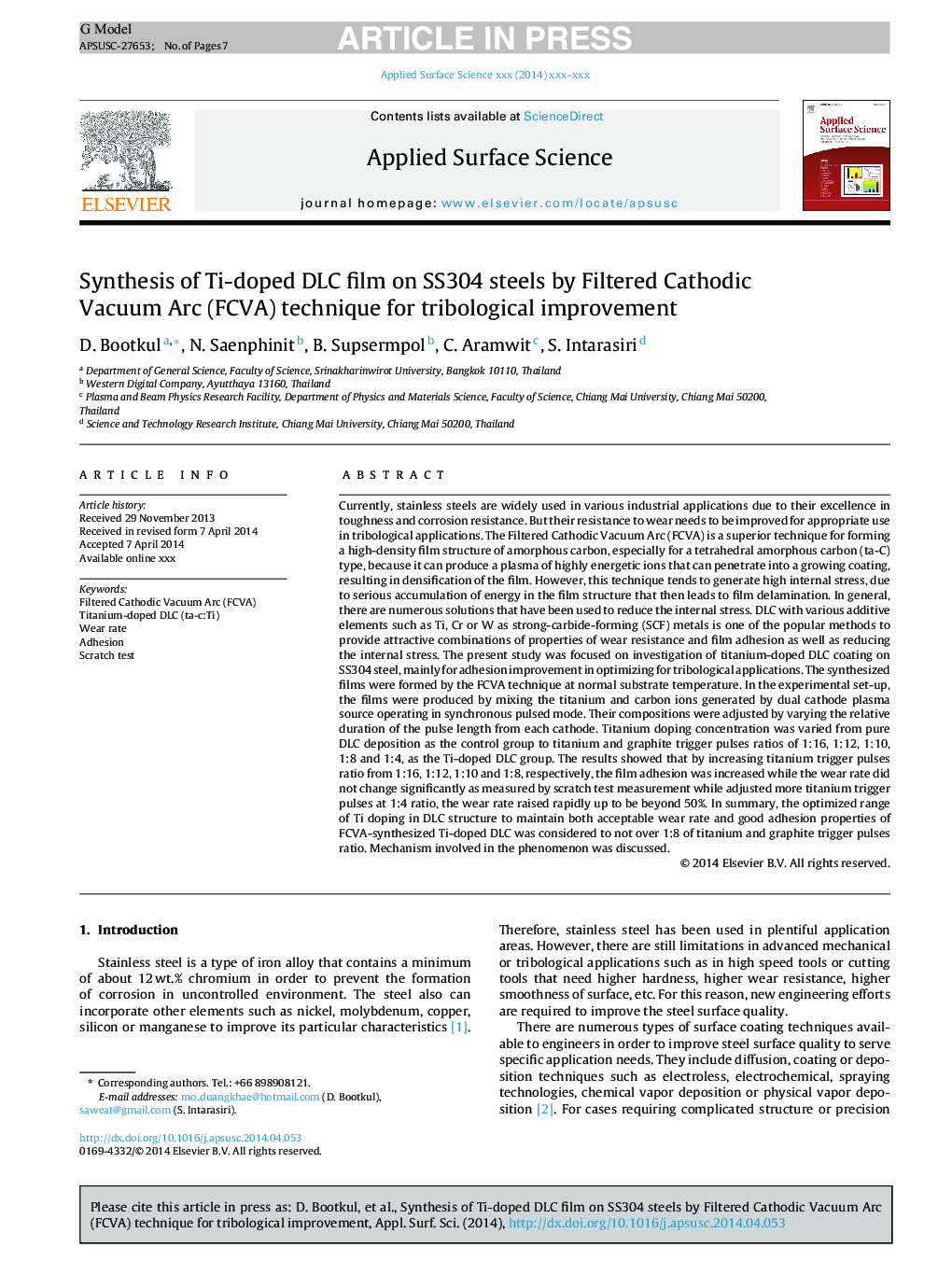| کد مقاله | کد نشریه | سال انتشار | مقاله انگلیسی | نسخه تمام متن |
|---|---|---|---|---|
| 5356683 | 1503654 | 2014 | 7 صفحه PDF | دانلود رایگان |
عنوان انگلیسی مقاله ISI
Synthesis of Ti-doped DLC film on SS304 steels by Filtered Cathodic Vacuum Arc (FCVA) technique for tribological improvement
دانلود مقاله + سفارش ترجمه
دانلود مقاله ISI انگلیسی
رایگان برای ایرانیان
کلمات کلیدی
موضوعات مرتبط
مهندسی و علوم پایه
شیمی
شیمی تئوریک و عملی
پیش نمایش صفحه اول مقاله

چکیده انگلیسی
Currently, stainless steels are widely used in various industrial applications due to their excellence in toughness and corrosion resistance. But their resistance to wear needs to be improved for appropriate use in tribological applications. The Filtered Cathodic Vacuum Arc (FCVA) is a superior technique for forming a high-density film structure of amorphous carbon, especially for a tetrahedral amorphous carbon (ta-C) type, because it can produce a plasma of highly energetic ions that can penetrate into a growing coating, resulting in densification of the film. However, this technique tends to generate high internal stress, due to serious accumulation of energy in the film structure that then leads to film delamination. In general, there are numerous solutions that have been used to reduce the internal stress. DLC with various additive elements such as Ti, Cr or W as strong-carbide-forming (SCF) metals is one of the popular methods to provide attractive combinations of properties of wear resistance and film adhesion as well as reducing the internal stress. The present study was focused on investigation of titanium-doped DLC coating on SS304 steel, mainly for adhesion improvement in optimizing for tribological applications. The synthesized films were formed by the FCVA technique at normal substrate temperature. In the experimental set-up, the films were produced by mixing the titanium and carbon ions generated by dual cathode plasma source operating in synchronous pulsed mode. Their compositions were adjusted by varying the relative duration of the pulse length from each cathode. Titanium doping concentration was varied from pure DLC deposition as the control group to titanium and graphite trigger pulses ratios of 1:16, 1:12, 1:10, 1:8 and 1:4, as the Ti-doped DLC group. The results showed that by increasing titanium trigger pulses ratio from 1:16, 1:12, 1:10 and 1:8, respectively, the film adhesion was increased while the wear rate did not change significantly as measured by scratch test measurement while adjusted more titanium trigger pulses at 1:4 ratio, the wear rate raised rapidly up to be beyond 50%. In summary, the optimized range of Ti doping in DLC structure to maintain both acceptable wear rate and good adhesion properties of FCVA-synthesized Ti-doped DLC was considered to not over 1:8 of titanium and graphite trigger pulses ratio. Mechanism involved in the phenomenon was discussed.
ناشر
Database: Elsevier - ScienceDirect (ساینس دایرکت)
Journal: Applied Surface Science - Volume 310, 15 August 2014, Pages 293-299
Journal: Applied Surface Science - Volume 310, 15 August 2014, Pages 293-299
نویسندگان
D. Bootkul, N. Saenphinit, B. Supsermpol, C. Aramwit, S. Intarasiri,